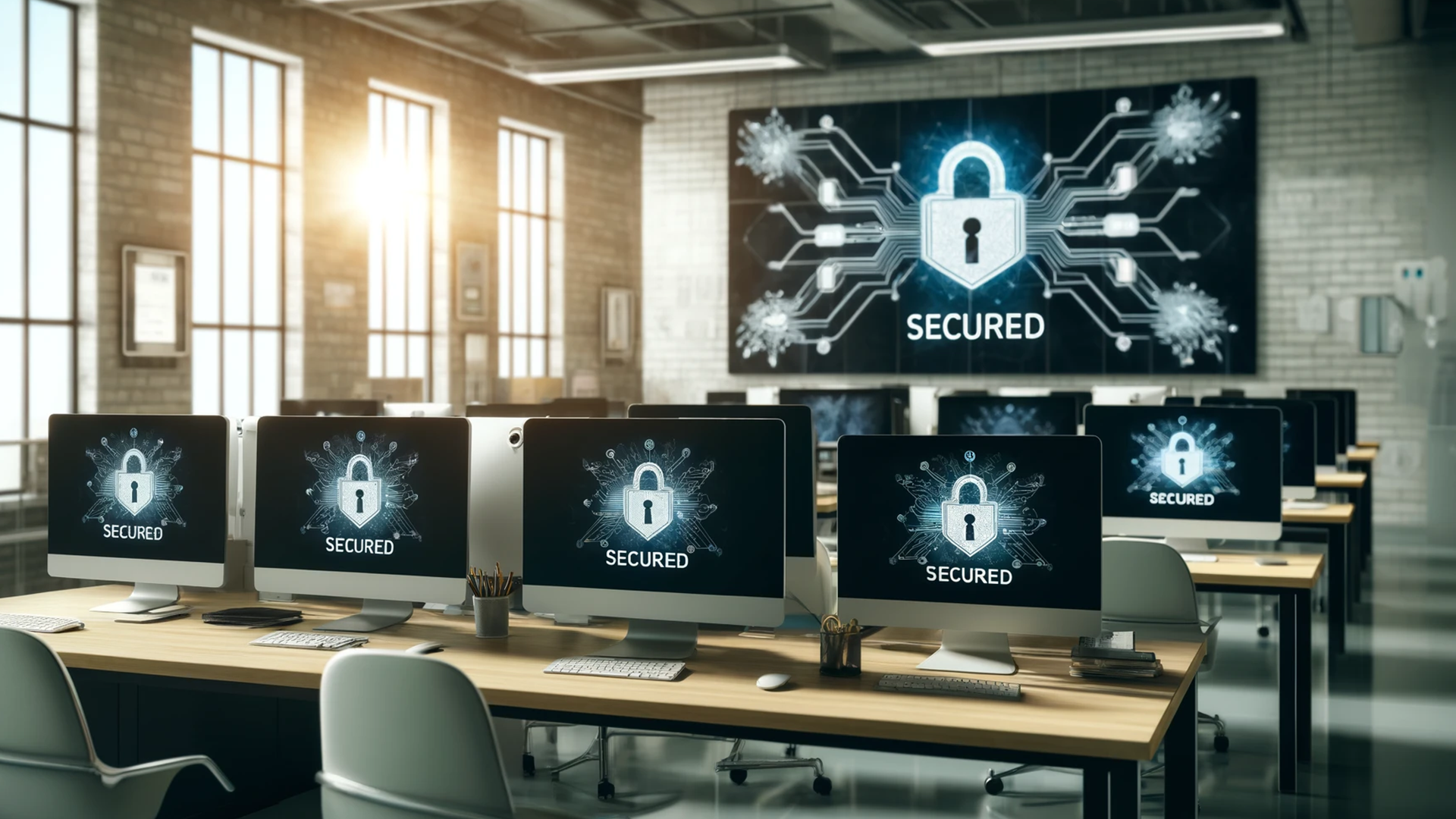
Thank you
Our team of industry domain experts combined with our guaranteed SLAs, our world class technology .


Get Immediate Help
The modern workplace requires a workforce that is not only aware of cyber threats but also adept at countering them. This is where cyber-smart team building comes into play. Effective cybersecurity training is not just about delivering information; it’s about building a security-conscious culture within your organisation. Let’s explore how to build a cyber-smart team and enhance your organisation’s security posture.

Cyber-smart team building involves equipping your workforce with the knowledge, skills, and mindset needed to protect your organisation from cyber threats. This goes beyond traditional training methods by incorporating interactive, real-world scenarios and continuous learning opportunities. The goal is to foster a culture of Security Awareness Simulations & Scenarios where every employee understands their role in safeguarding the organisation.

Organisations face a multitude of cyber threats daily, from phishing attacks and malware to sophisticated social engineering schemes. Without proper training, employees can inadvertently become the weakest link in your security chain. Effective security training helps mitigate these risks by:
1. Enhancing Threat Detection: Employees learn to recognise and respond to potential threats.
2. Improved Incident Response & Recovery: Quick and informed reactions to security incidents minimise damage.
3. Ensuring Compliance: Adhering to regulatory requirements and industry standards.
4. Building Trust: Customers and partners are reassured when they know you prioritise security.
1. Real-World Scenario-Based Training
Make it Real, Make it Relevant: Traditional, lecture-based training can be dry and unengaging. Instead, use real-world scenarios that employees are likely to encounter. This could include:
- Phishing Simulations: Test employees’ ability to identify and avoid phishing emails. Provide feedback and training based on their responses.
- Role-Playing Activities: Simulate social engineering attacks or suspicious phone calls. This interactive approach helps employees practice making decisions in a safe environment.
- Gamification: Introduce points, badges, and leaderboards to make learning fun and engaging. Healthy competition can enhance participation and retention.
2. Focus on Practical Skills
Empower Employees with Practical Knowledge: Ensure your training program equips employees with actionable skills, such as:
- Password Management Techniques: Teach employees how to create strong passwords and use password managers to prevent reuse.
- Secure Browsing Habits: Educate on safe browsing practices, including avoiding suspicious websites and links.
- Data Protection Strategies: Train on how to handle sensitive data securely, both online and offline.
3. Crafted Training for Different Roles
One Size Doesn’t Fit All: Cyber risks vary across different departments and roles. Customise your training content to address specific needs:
- Department-Specific Needs: For instance, finance teams might need more in-depth training on identifying financial scams, while HR might focus on protecting employee data.
- Executive Cybersecurity Training: Equip leaders with the knowledge to champion cybersecurity initiatives and enforce policies within their teams.
- Non-Technical Employee Training: Make sure even non-technical staff understand basic security principles and practices.
4. Continuous Learning
Keep the Momentum Going: Cyber threats are constantly evolving, so your training should too:
- Microlearning Modules: Deliver bite-sized, easy-to-digest training sessions that fit into busy schedules.
- Regular Security Awareness Campaigns: Use posters, internal newsletters, or short videos to keep cybersecurity top-of-mind.
- Security Champions: Identify and train security champions in each department to promote best practices and keep colleagues informed.

Training alone is not enough. You need to build a culture where security is a shared responsibility. Here’s how:
1. Leadership Commitment
Set the Tone from the Top: Visible support from leadership for cybersecurity initiatives is crucial. Leaders should actively promote security awareness and participate in training sessions.
2. Open Communication
Encourage a Speak-Up Culture: Employees should feel comfortable reporting suspicious activity without fear of reprisal. Open lines of communication help in early detection and quick response to threats.
3. Positive Reinforcement
Reward Good Practices: Recognise and reward employees who demonstrate good cybersecurity habits. This reinforces positive behaviour and encourages others to follow suit.

To ensure your training program is effective, regularly measure and analyse its impact:
- Cybersecurity Metrics: Track key metrics such as the number of phishing emails reported, reduction in security incidents, and employee engagement in training activities.
- Security Training Effectiveness: Conduct regular assessments and surveys to gather feedback and identify areas for improvement.
- Continuous Improvement: Use the insights gained from these metrics to continuously refine and enhance your training program.

A well-trained workforce is a critical component of your overall cybersecurity strategy. Effective training helps in mitigating cyber risks by reducing the likelihood of human error and enhancing your defense mechanisms.
Improved incident response and recovery are also significant benefits of Cybersecurity Training for Non-Technical Employees. Ensuring that employees know how to respond to incidents quickly and effectively can minimize damage and facilitate a faster return to normal operations.
Additionally, comprehensive Industry-Specific Cybersecurity Training Programs demonstrate IT Security compliance with industry standards and build trust with customers and partners. This not only strengthens your organization's security posture but also enhances its reputation and reliability in the market.
At Microminder CS, we understand the importance of a cyber-smart team in protecting your organisation. Our Security Awareness & Training Services are designed to build a security-conscious culture within your organisation. We offer:
- Customised Training Programs: Tailored to the specific needs of your industry and organisation.
- Interactive Learning Modules: Engaging and practical training scenarios.
- Continuous Cybersecurity Education Programs: Ensuring your team stays updated with the latest cyber threats and best practices.
- Executive Cybersecurity Training: Equipping your leadership with the knowledge to drive security initiatives.
By partnering with Microminder CS, you can ensure your team is well-equipped to handle the cyber threats of today and tomorrow. Let us help you build a cyber-smart workforce that strengthens your organisation’s security posture.
Cyber-smart team building is essential for the modern workplace. By implementing interactive, continuous, and tailored cybersecurity training, you can foster a culture of security awareness and significantly reduce your organisation’s risk of cyber threats. Remember, the key to a strong defense is a well-informed and vigilant team. Invest in cybersecurity training today and build a fortress for your organisation.
Ready to build a cyber-smart team? Contact Microminder CS today to learn more about our comprehensive Security Awareness & Training Services.
Don’t Let Cyber Attacks Ruin Your Business
Call
UK: +44 (0)20 3336 7200
KSA: +966 1351 81844
UAE: +971 454 01252
Contents
To keep up with innovation in IT & OT security, subscribe to our newsletter
Recent Posts
Penetration Testing | 10/11/2025
Cloud Security | 07/11/2025
Cybersecurity | 06/11/2025
What is cyber-smart team building?
Cyber-smart team building involves creating a workforce that is knowledgeable, vigilant, and proactive about cybersecurity. It includes training employees to recognise and respond to cyber threats effectively, fostering a culture of security awareness, and continuously updating their skills to handle evolving threats.Why is cybersecurity training important for the modern workplace?
Cybersecurity training is crucial because employees are often the first line of defense against cyber threats. Proper training helps employees recognise and avoid common threats like phishing, understand safe browsing practices, manage passwords securely, and respond appropriately to security incidents. This reduces the risk of breaches and protects sensitive information.What are some effective methods for cybersecurity training?
Effective cybersecurity training methods include: - Scenario-Based Training: Using real-world scenarios to teach employees how to handle common cyber threats. - Gamification: Making training engaging and fun through points, badges, and leaderboards. - Role-Playing: Simulating attacks to practice responses in a safe environment.How can we measure the effectiveness of our cybersecurity training?
The effectiveness of cybersecurity training can be measured using various metrics, such as: - Employee Engagement: Tracking participation rates in training programs. - Phishing Test Results: Monitoring the success rates of simulated phishing tests. - Incident Response Time: Measuring how quickly employees report and respond to security incidents.What role does leadership play in building a cyber-smart team?
Leadership plays a crucial role in fostering a culture of cybersecurity awareness. Executives should visibly support and participate in cybersecurity initiatives, enforce security policies, and encourage open communication about security concerns. Their commitment sets the tone for the entire organisation and underscores the importance of cybersecurity.